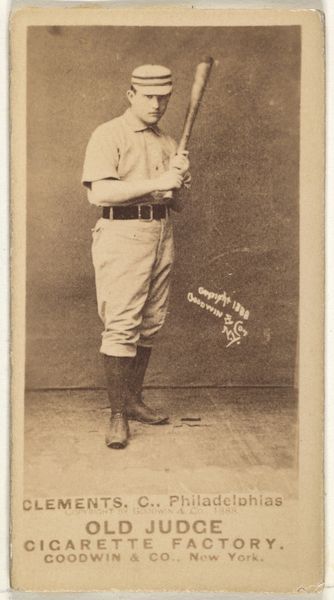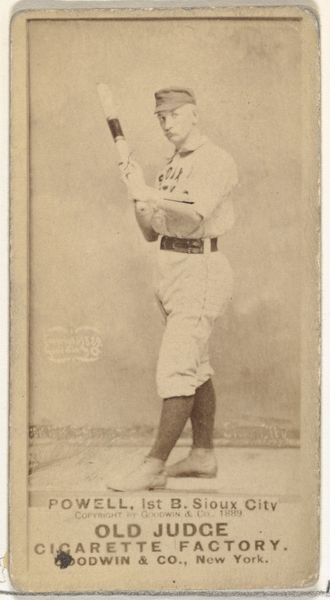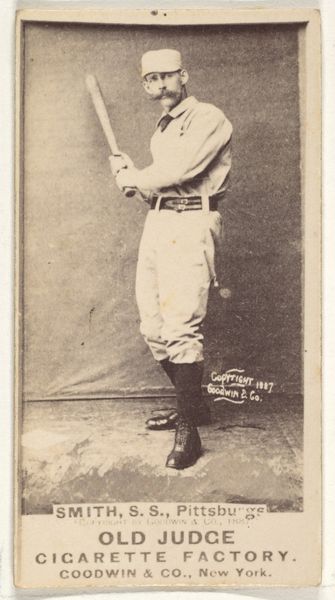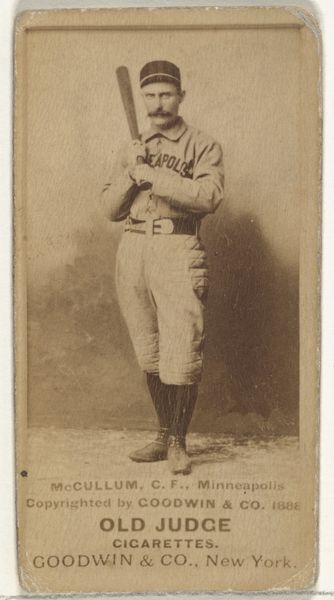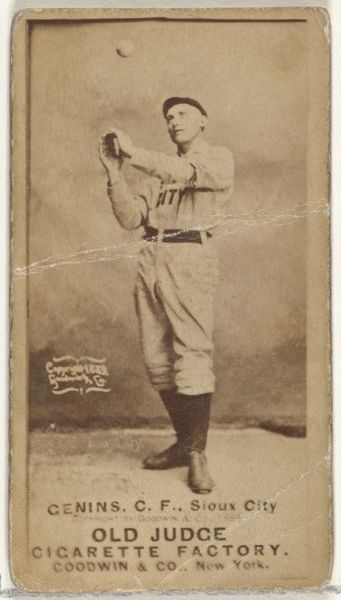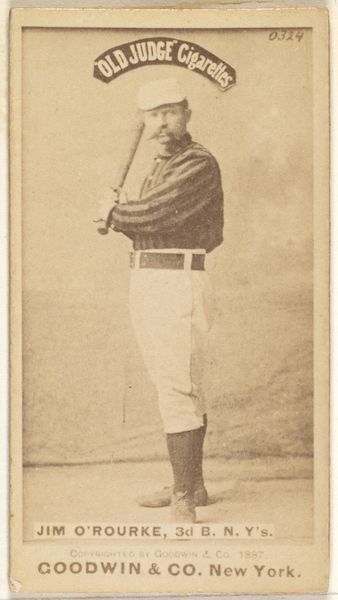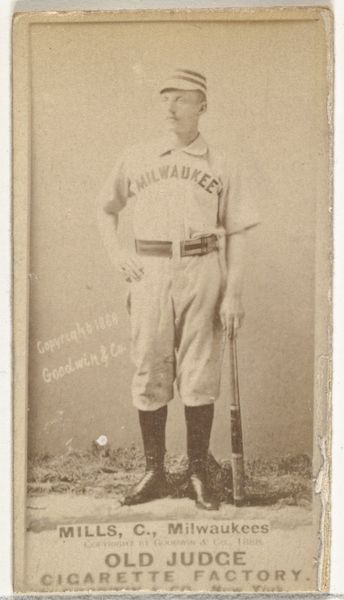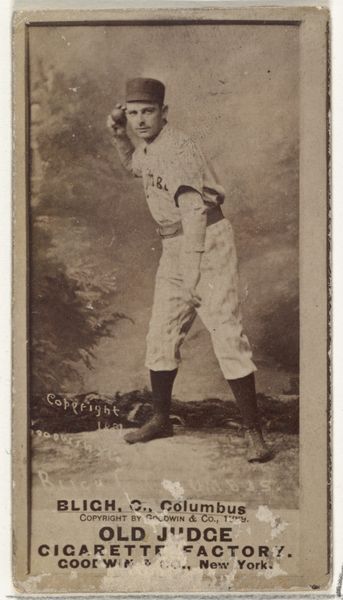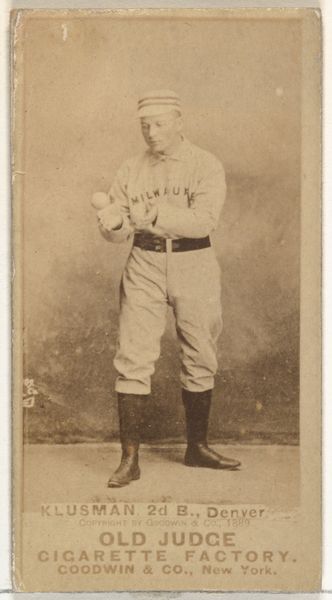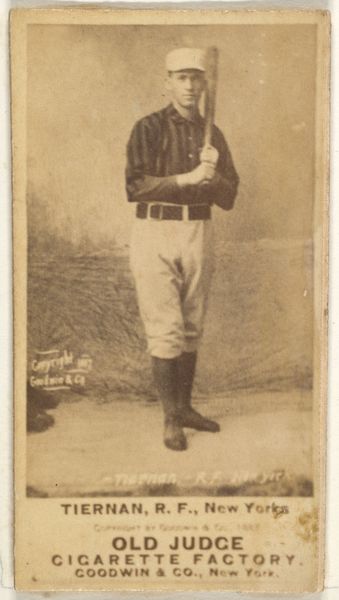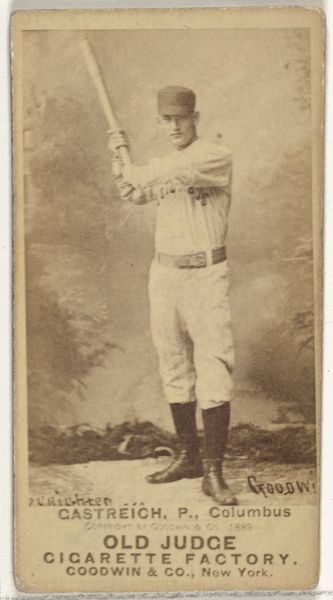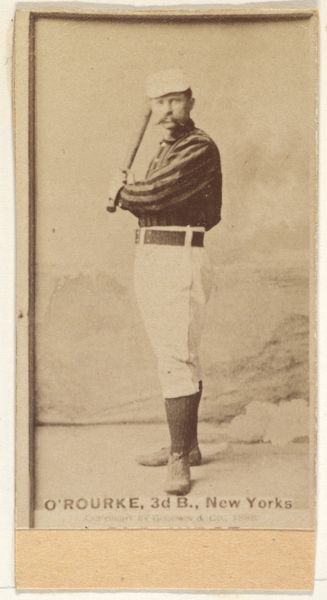
Peter W. Webber, Pitcher, Sioux City Corn Huskers, from the Old Judge series (N172) for Old Judge Cigarettes 1889
print, photography
portrait
impressionism
baseball
photography
men
athlete
Dimensions: sheet: 2 11/16 x 1 3/8 in. (6.9 x 3.5 cm)
Copyright: Public Domain
Editor: Here we have a trade card from 1889 titled "Peter W. Webber, Pitcher, Sioux City Corn Huskers." It’s from the Old Judge series of baseball cards, distributed by Goodwin & Company with their cigarettes. What catches your eye? Curator: Initially, the tonal range impresses me. The sepia tones create a visual field organized around contrasting lights and darks that emphasize the contours of Webber's face and uniform. The subtle variations generate a captivating sense of depth within the limited space of the card. Editor: Right, and considering its purpose as essentially an advertising insert, that sepia toning evokes a sense of history, elevating the player beyond just a fleeting image to someone more…enduring. I find it fascinating to consider the labor involved. Thousands of these cards printed, packaged, and distributed. All to sell cigarettes, really grounding baseball’s burgeoning popularity in commerce. Curator: I find the figure's compositional structure compelling, with its distinct verticality balanced by the baseball bat. It's interesting to observe how the textual elements contribute. The arrangement—artist, title, commercial entity—constructs a network of signification, pointing to the confluence of sports, celebrity, and capital. Editor: It does make one consider who these cards were really for: the players or the public buying cigarettes? Also, I wonder about Webber's payment and rights related to image use back then; did he even sign off on this, or were Goodwin and Co. essentially benefiting off his name and likeness, as well as the other team players? Curator: That gets to the fundamental aesthetic, I suppose, and it’s relationship to production—what’s depicted and how. Here, in a simplified pictorial rhetoric that amplifies legibility, the human element serves a market value function. It all creates a compelling visual system rooted in specific intentions and social realities. Editor: It's easy to overlook that it’s essentially a small advertisement produced on a mass scale. These trade cards really blur the line between ephemera, commercial product, and early forms of portraiture documenting sports icons. Curator: Looking again, I notice a harmony within the design that invites a thoughtful inspection into representation and early capitalist visual culture. Editor: Yes, I agree that, materially, its production signals more about cultural shifts and commerce than merely being about the athlete depicted on the card.
Comments
No comments
Be the first to comment and join the conversation on the ultimate creative platform.
